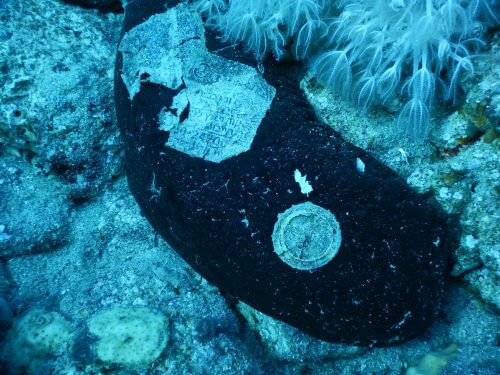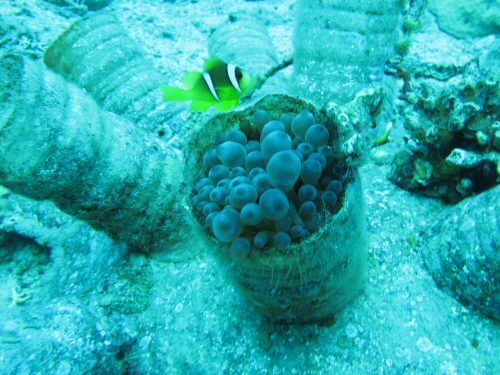Researchers from Tel Aviv University sampled sedentary animals from nine different beaches; Microplastic particles were found in the wastes of all the beaches and in most of them chemicals from the production processes of plastic were found that are known to be harmful to living creatures (including humans)

In a study conducted in the laboratory of Prof. Noa Shankar from the School of Zoology of Tel Aviv University, and the Steinhardt Museum of Nature, invertebrates of the estella type were sampled from nine sites along the coast of Israel, in the Mediterranean Sea and in the Gulf of Eilat. In samples from all the beaches, microplastic particles less than five millimeters in size were found in the bodies of the Israelis, and phthalate-type chemicals that are used in the plastic industry and can cause a variety of damage, including hormonal disruptions, were also found in animals from many beach waters.
The research, led by doctoral student Gal Vered from the School of Zoology in the Faculty of Life Sciences, and in collaboration with Prof. Dror Avisher and Aviv Kaplan from the School of Environment and Earth Sciences in the Faculty of Exact Sciences at Tel Aviv University, was published in the journal Marine Pollution Bulletin in December 2018.
"Plastic pollution in the sea and the damage they cause to the marine environment in general and marine animals in particular are a very burning contemporary issue in the field of nature protection, and World Environment Day (June 5.6.18, 500) was even dedicated to this issue this year," says Prof. Shankar. Indeed, according to the data of the Ministry of Environmental Protection, humans use enormous amounts of plastic: every minute around one million plastic drinking bottles are purchased in the world, and 8 billion plastic bags are consumed every year. A large part of the plastic we consume, about 80 million tons a year, ends up in the oceans - equivalent to a loaded truck that spills into the sea every minute. And more: recent estimates state that about XNUMX% of all marine pollution today originates from plastic products.
"In the marine environment, plastic products break down into tiny particles called microplastics, whose size ranges from a few tens of microns (micron = millionth of a meter) to five millimeters, so most of them cannot be seen with the naked eye," explains Prof. Shanker. "In addition, they release various chemicals into the water that are used by the plastic industry to impart a variety of properties to its products - such as flexibility, strength, color and more, but may cause various and severe damages to living creatures, such as hormonal disruptions. We asked to examine the level of plastic pollution that reaches marine animals along Israel's coasts, and from there to draw conclusions about the severity of the water pollution."
For the first time in the world in this type of research, the researchers used an invertebrate animal called an istel, which is common in all marine habitats in the world, and is particularly suitable for this type of research: it is a sedentary animal that clings to a rock and does not move from its place all its life. It is fed by filtering tens of liters of sea water every day, and when the water is polluted, the pollutants also accumulate in its body. That's why an examination of stones taken from a certain beach gives a very reliable picture of the state of pollution and the level of environmental health at that site. In scientific terms, the ichthyels are biological markers of the quality of the marine environment. In addition, this group of invertebrates is evolutionarily closest to vertebrates (such as humans), and is therefore a common model system for research.

For the purpose of the study, the researchers sampled oysters from nine different sites, including harbors, bathing beaches and nature reserves. Seven of the sites are spread along the Mediterranean coast, from north to south: Achziv Reserve, Port of Acre, Makhmorut, Herzliya, Bat Yam, Palmahim National Park and Ashkelon National Park; And two are in the Red Sea: the marina in Eilat and the dolphin reef. They then tested in the laboratory the amount of microplastic particles in each item; In addition, using a new and highly accurate chemical analysis method, developed at the Water Research Center headed by Prof. Avisher, they looked for remnants of plastic additives of the phthalate type in Acetlan that give flexibility to products, and can cause hormonal disruptions and a variety of other damages in animals and humans. And the results should worry us all...
"In all the sites we checked, we found straws with microplastic particles, and in most of the sites we also found phthalate-type industrial additives," says researcher Gal Vared. "It is important to note that there is not always a clear connection between the destination of the beach (port, bathing beach, national park), and the level of pollution visible to the eye, and our findings. For example: in a comparison between two nearby bathing beaches, which apparently have a similar level of cleanliness, a high concentration of phthalates was found in one, while in the other there were almost no phthalates at all. The dolphin reef in Eilat excelled in the almost complete absence of plastic additives, but on the other hand, we were sorry to discover high levels of plastic additives at bathing beaches that many of us usually visit with our children."
"Our research turns on a red light for the entire public in Israel," concludes Prof. Shanker. "Even if it is not always visible to the eye, the findings show that our beaches are polluted with microplastics and chemicals derived from plastic products. Plastic is a material created by man for his use, and it is widely used, but it can be dangerous for the environment and for us. Therefore we are all obliged to use it responsibly. In addition to recycling bottles and packaging, we call on the public, among other things, to reduce the use of plastic products and in particular disposable products. It's in our hands!”
More of the topic in Hayadan:

2 תגובות
Thank you "Haidaan" for bringing the abstracts of the articles from the forefront of environmental ecological science
Shit article